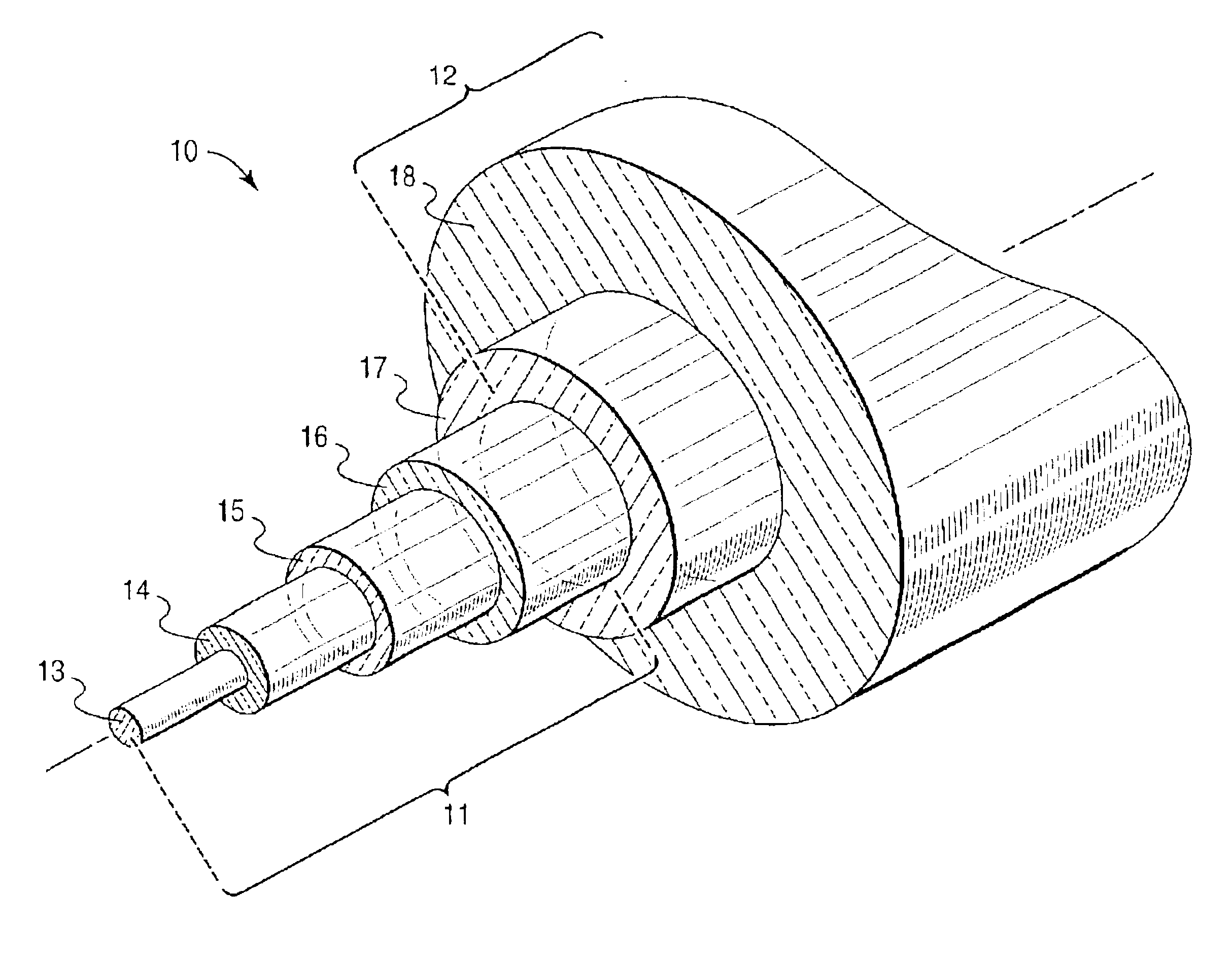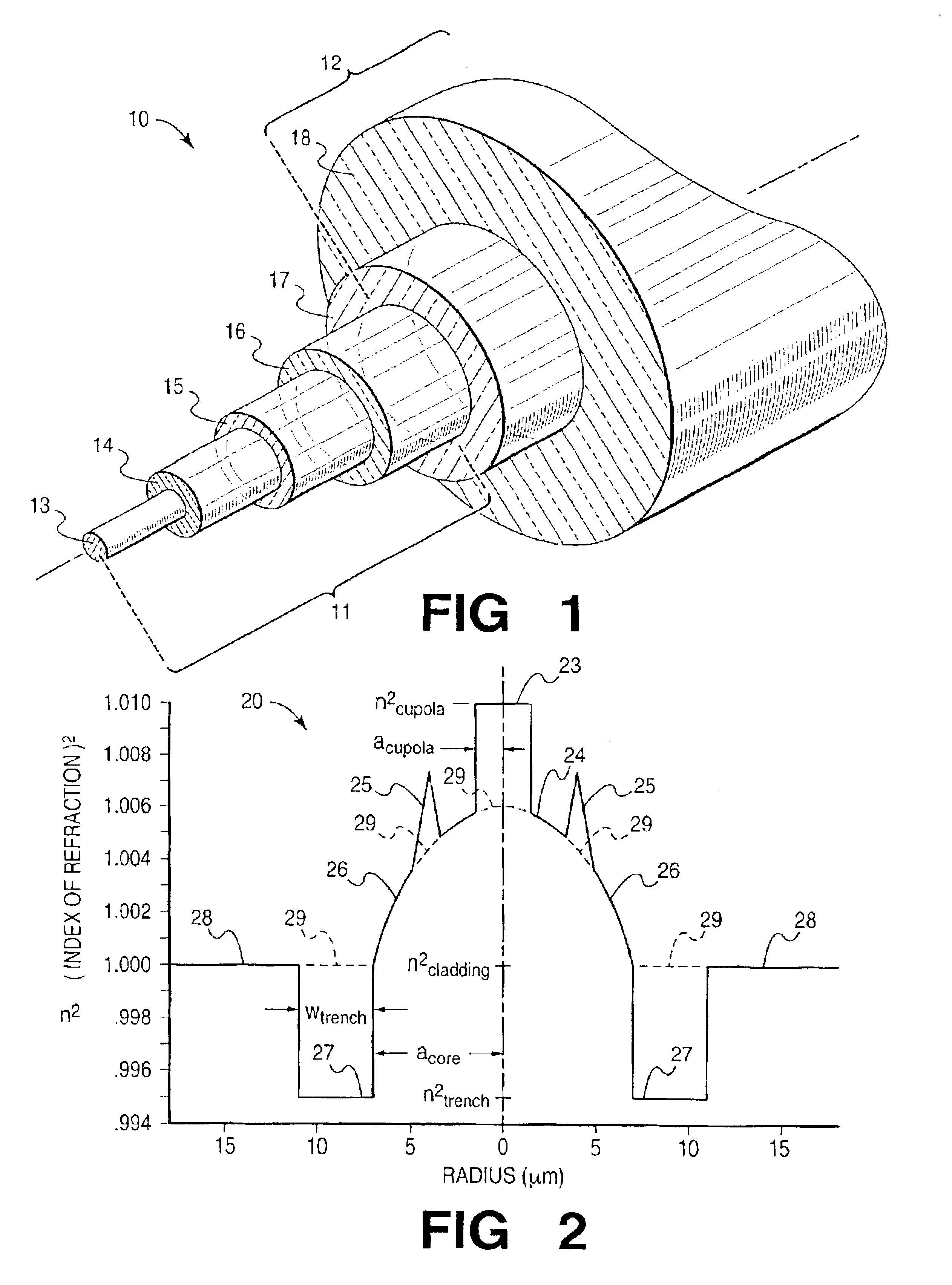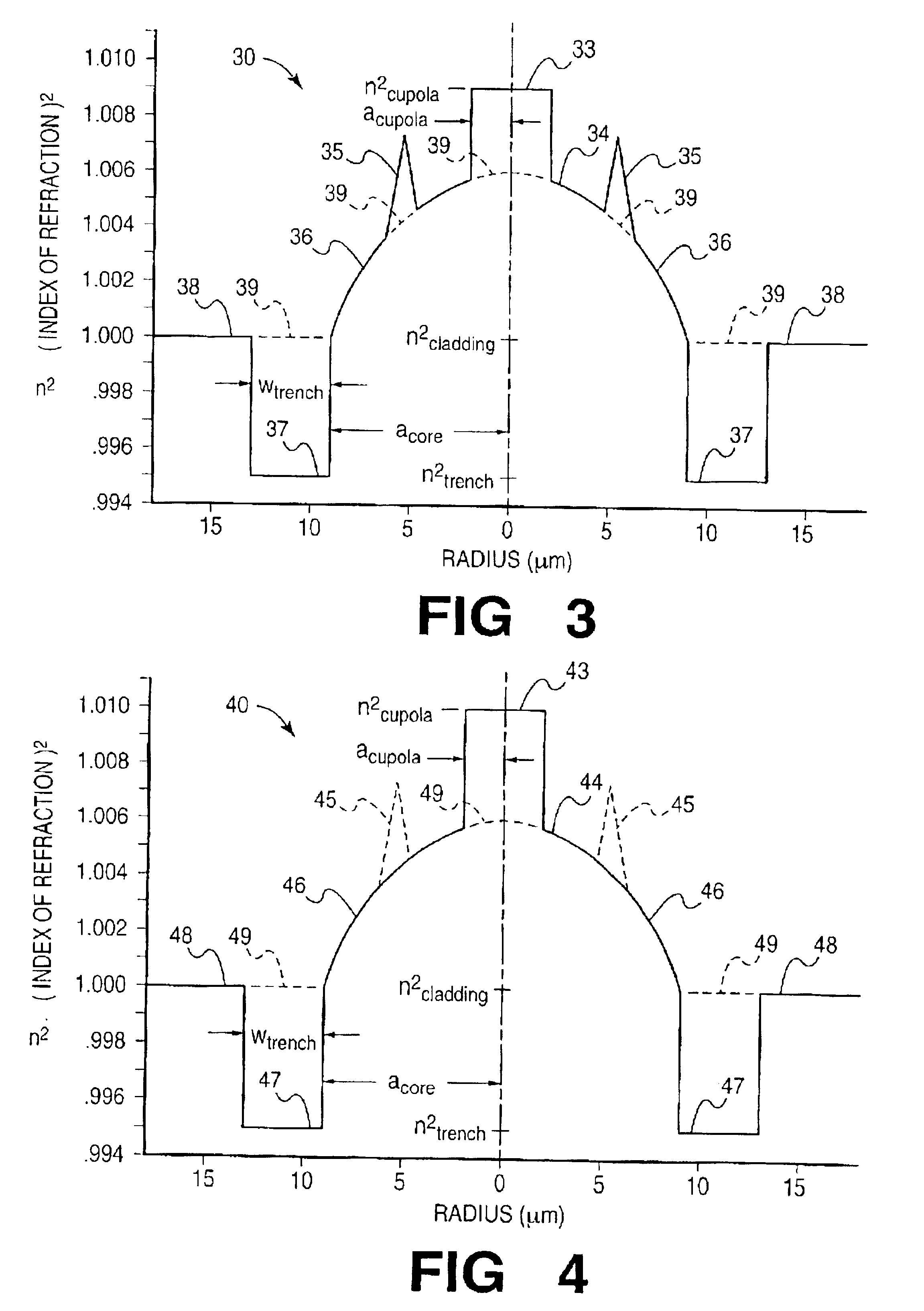Optical fiber for single-mode operation
a single-mode operation, optical fiber technology, applied in the field of optical fiber communications, can solve the problems of increasing the cost of splicing, and difficulty in splicing, so as to facilitate mode coupling, enhance the inherent selectivity, and reduce the incidence
- Summary
- Abstract
- Description
- Claims
- Application Information
AI Technical Summary
Benefits of technology
Problems solved by technology
Method used
Image
Examples
example 1
A fiber of the profile of FIG. 2, is viewed as derived from an unfeatured fiber of near-2 α profile with cladding of undoped silica—accordingly n2cladding=1. Parameter values, in the order listed in Table 1, are: acore=7 μm, n2cupola=1.01, acupola=1.5 μm, n2trench=0.995, wtrench=4 μm. Operating at carrier wavelength, λ0=1550 nm, MFR=6.5 μm with macrobend and microbend loss performance equal to or better than that of TSMF.
Metro ESMF Design
FIG. 3 is a cross-sectional, index-of-refraction, profile plot considered in discussion of ESMF for medium and short distance transmission. With span lengths no greater than 50 km, concern for fiber insertion loss is lessened, so that operation over a broadened wavelength range becomes viable. The operating range now includes that associated with the nominal carrier, λ0=1310 nm, so resulting in a total range of 1100-1700 nm (excepting a range centered at the 1385 nm water peak if not eliminated). Coordinates are those of FIG. 2—radial distance from ...
example 2
A fiber of the profile of FIG. 3, is viewed as derived from an unfeatured fiber of near-2 α profile with cladding of undoped silica—accordingly n2cladding=1. Parameter values, in the order listed in Table 2, are: acore=9 μm, n2cupola=1.009, acupola=2.0 μm, n2trench=0.995, wtrench=4 μm. Operating at carrier wavelength, λ0=1110 nm, MFR=7.5 μm: at λ00=1550 nm, MFR>8.2 μm.
Access and Enterprise ESMF Design (“Local Transmission”)
FIG. 4 is a cross-sectional, index-of-refraction, profile plot considered in discussion of ESMF for local transmission—e.g., for span length typically ≦10 km. Likely of lesser commercial significance than long haul or metro, local ESMF is included for the possibility that its very broad single-mode operating range may finally lead to replacement of multimode fiber now commonly used in systems designed for operation at λ0=850 nm. As in FIGS. 2-3, coordinates are: radial distance from the fiber axis in units of μm on the abscissa; and n2, the second power of the ind...
example 3
A fiber of the profile of FIG. 4, is viewed as derived from an unfeatured fiber of 2 α profile with cladding of undoped silica—accordingly n2cladding=1. Parameter values, in the order listed in Table 3, are: acore=9 μm, n2cupola=1.01, acupola=2 μm, n2trench=0.995, wtrench=4 μm. Operating at carrier wavelength, λ0=850 nm, MFR=7 μm at λ0=1550 nm, MFR>9 μm.
7. Dispersion Tailoring
Without specific design provision, ESMF, with its larger core, tends toward values of chromatic dispersion approaching bulk values. Provided with appropriate lengths of Dispersion Compensating Fiber, it meets circuit requirements. Initial commercial use may, accordingly, be in conjunction with DCF.
Design means are available for adjusting chromatic dispersion in ESMF to meet requirements of Non-Zero Dispersion Fiber (NZDF), e.g., TrueWave® fiber—e.g., for yielding dispersion within the now-specified range of 1.5-8 ps / nm-km as measured at 1550 nm. Dispersion management features, most effectively situated within t...
PUM
| Property | Measurement | Unit |
|---|---|---|
| radial distance | aaaaa | aaaaa |
| core radius | aaaaa | aaaaa |
| radial distance | aaaaa | aaaaa |
Abstract
Description
Claims
Application Information
 Login to View More
Login to View More - R&D
- Intellectual Property
- Life Sciences
- Materials
- Tech Scout
- Unparalleled Data Quality
- Higher Quality Content
- 60% Fewer Hallucinations
Browse by: Latest US Patents, China's latest patents, Technical Efficacy Thesaurus, Application Domain, Technology Topic, Popular Technical Reports.
© 2025 PatSnap. All rights reserved.Legal|Privacy policy|Modern Slavery Act Transparency Statement|Sitemap|About US| Contact US: help@patsnap.com



